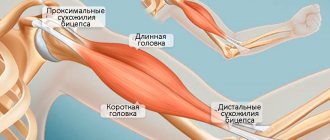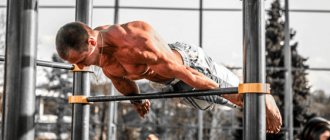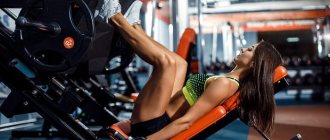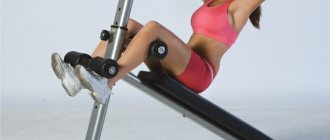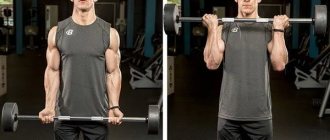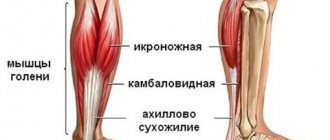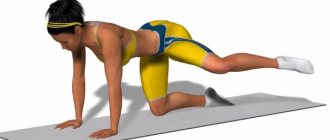Why is it important to develop your forearms? In this article, you will learn what role these muscles play, and also get acquainted with exercises that stimulate their growth, regardless of genetic characteristics.
Massive forearms are considered a sign and calling card of a real bodybuilder or athlete. Indeed, developed, muscular forearms create a feeling of gigantic strength. And from a functional point of view, they allow the athlete to work with ever-increasing weights.
The forearms increase grip strength and are thus involved in pulling exercises. On stage, underdeveloped forearms immediately catch the eye and also disrupt the proportions of the body.
If you want bigger muscles, you will have to do specific exercises and training for your forearms. In addition to being one of the most difficult muscles to grow, their shape and size limit are determined by genetics. And those whom nature has not endowed with good heredity will have to work hard during training.
Anatomy of arm muscles
The arm muscles have many large, visible muscles that help us with everyday activities, such as changing clothes or lifting weights.
The complex design of the forearms allows us to perform completely different movements of our hands. Our fingers are also amazingly designed to allow us to grip barbells and dumbbells. All parts of the forearm, hand, fingers interact so harmoniously with each other that it is a real ensemble of bones, ligaments and tendons.
34 complex muscles provide varied mobility of our fingers and hands. They are so strong that trained people can support their weight by grasping something with a few fingertips.
| Brachioradialis (brachioradialis muscle) | It is located on the front of the forearm. It starts from the shoulder, or rather from the outer part of it, after which it makes an intersection through the elbow and extends to the radius. Involved in elbow flexion and also helps rotate the forearm up/down. |
| Wrist support | It is thanks to this muscle that we can supinate while pumping the biceps, since it rotates the hand outward. Resembles a thin plate in the shape of a triangle. It is attached from our elbow to the thumb side. |
| Extensor carpi radialis longus | Be located next to the brachioradialis on the side of the triceps muscle. Participates in the outward extension of our hand. |
| Flexor carpi radialis and ulnaris | These muscles are visible on the biceps side on the inside of our forearms. They work when you need to bend your hands towards yourself. They also perform pronation of the hand (turn it outward), this is their additional function. |
| Extensors and flexors of the fingers | These muscles are located throughout the forearm, on its outer and inner sides. They provide grip strength, but add little volume. |
| Pronator teres | The main function of this muscle is to turn the hand inward from the side of our little finger. Also involved in forearm flexion. |
| Pronator quadratus | Similar to the round one, but differs in that it has the shape of a plate with four corners and is located next to the palm. |
Just as with the calf muscles, the forearms require frequent and heavy loads. Despite the fact that when working with heavy weights (especially with various rows without wrist belts), the forearms are also involved, it is still better to do special exercises.
How to pump up your forearms with dumbbells
It is impossible to give a definite answer, because if, again, you use only isolation exercises, then you should not expect a large increase in muscle tissue. But if you perform basic exercises with dumbbells, for example, the Hammer, then there are much more opportunities to increase your forearms.
And if you want to pump up your forearms, then you first need to “hammer” them with basic exercises, and then “finish them off” with isolating exercises. Then the result is guaranteed.
The fact is that when working with dumbbells for biceps, the “trailer” also begins to involve the muscles of the forearms. Several joints work at once, which increases the area of fibers involved. When working with dumbbells only with the hands (flexion/extension of the wrists with any grip), you can only count on “pumping” the forearms or detailing the muscles if you perform many repetitions with a light or medium weight. There is no need to talk about gaining mass (pumping) the muscles of the forearms with the help of isolation exercises, even if you use heavy weights. The nature of the exercises is not the same.
Exercises with dumbbells for forearms
Seated wrist flexion/extension with dumbbells using a regular grip. This exercise belongs to the isolating type - only one joint and one muscle group are involved. You need to do it this way: sit on a bench or other surface so that your thighs are approximately parallel to the floor.
You need to hold the dumbbell by the handle with both hands (if there is not enough space for your palms, swing it wider). Hands with weights must be placed on your hips so that your palms face up. Now you can perform the exercise - lower and raise your wrists until they stop.
Seated wrist flexion/extension with dumbbells with a reverse grip (palms down). This exercise is also isolating.
But unlike the previous one, where the inner part of the forearms works, it uses another area of the arms - the outer part of the forearms. The starting position is similar, with the only difference being that the palms are facing down and the fingers are holding the weight. The amplitude of movements is constant - up and down until it stops.
Standing biceps curl with reverse grip. Despite the fact that in this exercise only one pair of joints works dynamically - the elbows (the wrists - statically), this exercise belongs to the basic (more specifically, special).
Execution: stand straight, holding dumbbells in your hands. When moving up, your palms should be pointing down toward the floor. When bending the elbow joints, the elbows themselves should be pressed to the sides. You need to raise your arms all the way, without lifting your elbows from your sides, and lower them until your arms are fully straightened.
"Hammer". The exercise also belongs to the special basic ones.
The starting position is similar to the previous exercise, but when working, the palms should face each other, that is, the dumbbells are held primarily vertically in the dynamic phase. You need to do this until your arms are fully bent, bringing the weights almost to your shoulders, but don’t forget about your elbows.
Why pump up your forearms?
Statistics show that one of the first things girls pay attention to in a man when meeting or getting to know him is his hands, and this is not surprising.
Reason #1. Aesthetic
Let's speak frankly. Most bodybuilders develop their forearms to make them look bigger and ultimately balance out their physique.
Massive forearms create the impression of enormous strength, that is, they reflect the physical capabilities of a person. In addition, the forearms, as well as the neck, are often the only visible parts of the body. But when athletes start doing wrist curls, few of them think about effectiveness and safety.
Reason #2. Safety and grip strength
Strong forearms allow you to perform various exercises on other muscle groups. Often the forearms can be a bit of a weak link, limiting your exercise options.
For example, to properly work your back, you need reverse-grip pull-ups and bent-over barbell rows, in which strong forearms play a leading role.
Reverse grip pull-ups
Grasp the horizontal bar with a reverse grip, at a distance slightly narrower than shoulder width. Keep your body straight. As you exhale, pull your body up, keeping your elbows closer to your body. Only the arms move. As you inhale, slowly return to the starting position.
Reverse grip pull-ups
Strong forearms require development of the entire upper body, and the athlete can lift more weight without risk of injury. Thus, forearm exercises are the key to safe and more effective training.
Bent-over barbell row
Take the barbell with an overhand grip, bend your knees slightly and tilt your body forward no more than 30 degrees. As you exhale, pull the barbell towards you. At the top point, tighten your back muscles and hold. As you inhale, slowly lower the barbell back down.
Bent-over barbell row
As with the calf muscles, the forearms require frequent and heavy loads. Although the forearms are involved when lifting heavy weights (especially during various deadlifts without wrist straps), it is better to perform specific exercises for the forearms.
The Uncomplicated Science of Effective Forearm Training
Building big, strong forearms is quite easy.
- Do plenty of lifting, pulling, and bending exercises.
- Perform additional forearm exercises as needed.
In fact, some believe that rule #2 is not necessary at all, since intensive training of the chest, back and arms is already enough.
However, many others (myself included) think that a weak grip limits the progress needed for rule #1, and forearm training can easily correct this.
So while your grip strength will increase naturally due to a proper iron training program, there are a few grip exercises you can do to speed up the process.
The best forearm exercises in the gym
The forearms are a fairly complex group of small muscles with several functions.
- The brachialis and brachioradialis muscles help flex the arm at the elbow and assist the forearm during flexion.
- The pronator teres muscle helps the forearm in the prone position, as well as when bending the arm at the elbow joint.
- The flexor muscles palmaris longus, flexor carpi radialis, and flexor carpi ulnaris flex the palm, while the extensor ulnaris and extensor carpi radialis brevis muscles extend the palm.
And each of these muscles must be loaded to one degree or another with special exercises.
Extensor exercises
These muscles consist of eight heads: extensor digitorum, extensor carpi radialis longus, extensor carpi radialis brevis, extensor carpi ulnaris, extensor index finger, extensor carpi radialis longus, extensor pollicis longus and extensor pollicis brevis.
These muscles extend beyond the forearm, so it is very important to develop them with the following exercises:
Barbell Palms Down Wrist Curl
Sit so that your forearms rest on your hips and your hands and the barbell are suspended. Palms are turned down. As you exhale, raise your wrists. As you inhale, lower it. The forearms do not move.
Barbell Palms Down Wrist Curl
Reverse grip biceps curl
Stand in front of the pulley, grab the handle and straighten up. As you exhale, keeping your shoulders still, pull the handle up to shoulder level, keeping your elbows close to your sides. As you inhale, return to the starting position.
Reverse grip biceps curl
Standing Pronated Grip Dumbbell Raise
Stand up straight and hold dumbbells with a pronated grip (palms facing down). The arms are extended along the body. As you exhale, contracting your biceps, lift the dumbbells to shoulder level. At the top point, pause for a second. Make sure you only work your forearms.
Standing Pronated Grip Dumbbell Raise
To vary the work and stimulate further growth of the extensor muscles, perform one of these exercises each workout with a palms-down grip on the bar. Your forearms should rest completely on your knees. Lower the weight so that the muscles are greatly stretched. Then extend your wrists for maximum contraction. If you're using dumbbells, work with each arm in turn.
Extensor exercises
This is the largest muscle of the forearm, stretching along the entire length of its inner part. The flexors consist of six heads: flexor digitorum superficialis, flexor digitorum profundus, flexor carpi radialis, flexor carpi ulnaris, palmaris longus and flexor pollicis longus.
The best exercises for the forearm flexor muscles:
Wrist curl with a barbell while sitting on a bench, palms up
Sit so that your forearms rest on your hips and your hands and the barbell are suspended. Palms are turned up. As you exhale, raise your wrists. As you inhale, lower it. The forearms do not move.
Wrist curl with a barbell while sitting on a bench, palms up
Bend the wrists on the lower block while sitting on a bench
Sit on a bench and grab the handle of the lower block. Palms face up. As you inhale, lower the handle as low as possible. As you exhale, raise the handle as much as possible, tensing the muscles of your forearms.
Bend the wrists on the lower block while sitting on a bench
Wrist curl while sitting on a bench with dumbbells, palms up
Sit so that your forearms rest on your thighs and your hands and dumbbells are suspended. Palms face up. As you exhale, raise your wrists. As you inhale, lower it. The forearms do not move.
Wrist curl while sitting on a bench with dumbbells, palms up
To perform this movement, hold the bar as you would for a normal barbell lift. Place your forearms on your thighs and bend your wrists upward as hard as possible. Tighten your muscles and return to the starting position.
Exercises on the brachioradialis muscle
The brachioradialis muscle is located on the outside of the forearm and is a thick, rope-like muscle that can be easily seen when the arm is fully extended. It consists of only one head - the brachioradialis.
Recommended exercises for the brachioradialis muscle:
Reverse grip barbell lift
Stand up straight with a barbell in your hands. Place your elbows close to your body. Keeping your shoulders motionless, as you exhale, lift the barbell to shoulder level, tightening your biceps. As you inhale, slowly lower to the starting position.
Reverse grip barbell lift
Biceps curls on a Scott bench with an EZ barbell with a reverse grip
Grab the bar with a medium overhand grip. Place your triceps on the pad of the bench and, straightening your arms, lower the barbell. As you exhale, contracting your biceps, bend your arms to shoulder level. As you inhale, slowly return to the starting position.
Biceps curls on a Scott bench with an EZ barbell with a reverse grip
Reverse grip biceps curl
Stand in front of the pulley, grab the handle and straighten up. As you exhale, keeping your shoulders still, pull the handle up to shoulder level, keeping your elbows close to your sides. As you inhale, return to the starting position.
Reverse grip biceps curl
Alternating dumbbell curls while standing
Take dumbbells and stand straight. Keeping your shoulders still, raise one arm and rotate your wrist at the same time. Contract your biceps fully and bring the dumbbell to your shoulder. Return to the starting position. Switch hands and repeat.
Alternating dumbbell curls while standing
Ultimately, you yourself will find your ideal exercises by trying all of the above. We are completely sure of one thing, they definitely work.
Main muscles involved
To work out the muscles of the forearms at home, you can use exercises of different nature (isolating or basic). And you should understand that different exercises work different muscles – large and small.
Large muscles include:
- brachioradialis muscles;
- flexor carpi ulnaris;
- flexor carpi radialis.
Small muscles include:
- long palmar muscles;
- superficial and deep flexors of the fingers;
- flexor pollicis longus.
Some of the exercises described below involve not only the muscles of the forearms, but also other muscles of the arms and back of the chest.
For example, the exercise “bicep curls with dumbbells” involves the biceps themselves (biceps muscles), the anterior deltoid muscles and the muscles of the forearms. When doing pull-ups on the horizontal bar, the range of muscles worked is even wider: the latissimus, trapezius, deltoid, forearm muscles, biceps of the arms, small back muscles and rectus abdominis (abs). Basic exercises serve as the main tool for pumping up the forearms, and isolating exercises serve as an additional (“finishing” one). What types of exercises belong to are described below.
Ways to enlarge your forearm at home
Forget about wrist straps
Wrist straps relieve the load on the forearms and compensate for a weak grip, but in this case the muscles of the forearms are weakly loaded. To properly work out the forearms, maximum muscle contraction is necessary, which is impossible with belts.
Buy collapsible dumbbells
With this amazing equipment, you will have a lot of opportunities to quickly pump up your arm muscles at home, diversify the number of available movements with new exercises and complexes with dumbbells for the arms.
Use a thick bar
This will make your grip more difficult, and as a result of regular training, the size of your forearm will increase. If you don't have a thick bar at hand, simply wrap a towel around a regular bar. Similar equipment can be thought of at home.
Useful video from Yuri Spasokukotsky on developing grip and forearm strength using the Axel Apollo deadlift.
Wind the rope onto a weighted roller
Stand up straight and grab the roller with your palms facing down. Raise your arms parallel to the floor. Start winding the rope onto the roller by turning each hand up and down in turn. When the weight reaches the roller, slowly unwind the rope using the same wrist movements.
Winding rope onto a wrist roller
Essentially, this device is a heavy plate attached to a small handle with a thin rope.
- Slowly raise the handle with straight arms to shoulder level and begin to wind the rope onto the roller by turning your hands.
- When the weight reaches the roller, slowly unwind the rope with reverse movements of your wrists. Then relax and repeat the exercise.
Box
Hitting the punching bag repeatedly will also help develop forearm strength. Incorporate these exercises into your program from time to time and you will soon see progress. For example, 50 uppercuts with each hand perfectly develop the forearm flexors.
Use isometric exercises
Sets of isometric exercises for the forearms allow you to strengthen the muscle frame, increase strength and improve athletic performance without grueling hours of training in the gym.
Its effectiveness and accessibility to everyone has been proven over time, as well as its widespread use in yoga, bodybuilding, fitness, rehabilitation programs, martial arts and strength training.
Exercises for forearms (fingers)
Exercises with a wrist expander
Everyone knows what an expander is. This is perhaps not only the most important exercise for your fingers, but also the most convenient. After all, to perform it you need a small expander that easily fits in your pocket. The video below shows several techniques with this device.
On my own behalf, I will also say that the expander needs such strength that you can do a maximum of 15 full repetitions at a time. Not more. The fact that you bend it hundreds of times will not increase the volume of your forearms. Moreover, there are now quite a few really powerful models on the market for fingers of any strength.
Well, it is not advisable to train your forearms ONLY with an expander. It serves as an addition to the basic hand exercises, which will be discussed below.
Disk retention
It trains static strength of the forearms very well. You won’t build up large volumes with this exercise, but you will develop good strength. The essence of it is that you simply take the disk with your fingers and stand with it (you can immediately have a disk in each hand). This exercise is shown in the video below.
I’ll say right away that 50 kg discs are already aerobatics. Start with discs of 20 - 25 kg. It is also not only the weight of the disc that matters, but also its thickness and coating (rubber or all-iron disc).
Forearm training - A
Wrist curl with a barbell while sitting on a bench, palms up
- 3 sets of 12-15 reps
- Body part: Forearms and wrists Equipment: Barbell
Reverse grip biceps curl
- 3 sets of 12-15 reps
- Body Part: Biceps Equipment: Block
Alternating dumbbell curls while standing with a Hammer grip
- 3 sets of 12-15 reps
- Body part: Biceps Equipment: Dumbbells
Bend the wrists on the lower block while sitting on a bench
- 2 sets of 12-15 reps, forward and reverse grip
- Body Part: Forearms and Wrists Equipment: Block
Add to Calendar * Add to My Workouts * Print Workout
* — The service is in beta testing
As for the timing of working on the forearms, that is a completely different story: it is better to train them once a week, preferably at the end of the biceps workout.
Forearm training - B
Standing Pronated Grip Dumbbell Raise
- 3 sets of 12-15 reps
- Body part: Biceps Equipment: Dumbbells
Wrist curl while sitting on a bench with dumbbells, palms up
- 3 sets of 12-15 reps
- Body part: Forearms and wrists Equipment: Dumbbells
Standing biceps curl with reverse grip
- 3 sets of 12-15 reps
- Body part: Biceps Equipment: Barbell
Add to Calendar * Add to My Workouts * Print Workout
* — The service is in beta testing
You can also work on the muscles of the forearms on separate days, for example, 2 times a week, or combine them with calf training.
General recommendations for performing these exercises[edit | edit code]
Since the forearms are constantly involved both when performing exercises on other muscle groups and in everyday life, their resistance to stress is quite high. Therefore, they belong to the so-called “difficult” muscles and their development is a rather labor-intensive process.
A set of exercises for developing the muscles of the forearms should be performed 2 times a week, each exercise in three approaches, 15 - 20 repetitions in each approach, until failure. Before training the forearms, they need to be thoroughly warmed up and warmed up in order to prevent injury. It is undesirable to allow full stretching of the muscles at the end points of the amplitude.
As part of a training split, it is best to “pump up” your forearms on the day of arm training and on the day of back training. They need to be trained at the end of the workout, after working the arms and back, respectively. Otherwise, full training of the arms and back will be impossible.
2-3 days should pass between forearm workouts, otherwise they will not have time to recover, which can lead to chronic pain in the wrist area. It is advisable to include at least three of the exercises presented above in forearm training - one for the brachyradialis, one for the flexors and one for the extensors of the wrists. It is advisable to change the choice of exercises and the order of their implementation from workout to workout.
Forearm workout - B
Barbell Palms Down Wrist Curl
- 3 sets of 12-15 reps
- Body part: Forearms and wrists Equipment: Barbell
Bend the wrists on the lower block while sitting on a bench
- 3 sets of 12-15 reps
- Body Part: Forearms and Wrists Equipment: Block
Reverse grip biceps curl
- 3 sets of 12-15 reps
- Body Part: Biceps Equipment: Block
Add to Calendar * Add to My Workouts * Print Workout
* — The service is in beta testing
Benefits of Trained Forearms
Developed forearms are the key to effective pumping of large and medium muscle groups.
By performing an overhead pull-down to the chest, you will work your back before your fingers open. When doing a barbell curl, you'll do a set number of reps before pain in your arms forces you to release the barbell.
Strong forearms are important in pull-ups. Many people consider this exercise to be the standard exercise for pumping up the back, but when your weight is more than 90-100 kg, hanging on the bar is not easy.
